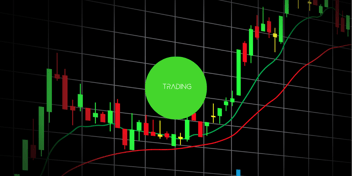Winning in Digital Assets and What Institutions Need to Know

21 July 2025
Lars Holst, CEO, GCEX
The institutional digital asset landscape is not approaching a tipping point; it has already arrived.
A recent pan-European survey has revealed that 86% of institutional investors across the EU and the UK intend to increase their exposure to crypto-assets by the end of 2025. Over half of them are planning to allocate at least 5% of their Assets Under Management (AUM) into digital assets within this timeframe. For an industry that only five years ago remained on the fringe of traditional finance, this represents a structural realignment in capital markets thinking.
As CEO of GCEX, a multi-jurisdictional regulated prime digital brokerage, I have spent the past decade working with hedge funds, family offices, professional trading desks and brokers navigating the fast-evolving digital asset market. What we see now is not just growing interest—but actual structural demand from institutional allocators who are shifting from strategy exploration to execution. But the critical success factor is no longer just regulatory clarity, or access to crypto—it is speed to execution and the ability to scale securely.
The Momentum Behind Institutional Allocation
Multiple forces are converging to catalyse institutional inflows into crypto. These include:
-
Regulatory clarity in key markets: MiCA in the EU and the Virtual Asset Regulatory Authority (VARA) in Dubai are examples of how regulators are creating the legal certainty investors demand.
-
Robust infrastructure and custody solutions: Institutions now require services that replicate the rigour of traditional finance, including segregated accounts, top-tier custodians, and robust risk management.
-
Product diversification: Beyond BTC and ETH, the demand is growing for diversified exposure including stablecoins, synthetic assets, and tokenised instruments.
-
Portfolio risk-adjusted returns: Crypto is now being positioned alongside emerging markets, real assets and alternative strategies to drive performance in otherwise yield-compressed environments.
This reconfiguration of strategy is not aspirational but operational. In order to deploy institutional capital at scale, the entire trade lifecycle must meet the standards of performance, reliability and compliance that buy-side and sell-side professionals are accustomed to in traditional markets.
Why Speed Defines Institutional Success
In a rapidly evolving 2025 for digital assets, speed has become far more than a competitive advantage, it is a strategic necessity. Unlike traditional markets that close at the bell, digital asset markets operate continuously, without interruption, across global time zones. This non-stop environment means that price discovery, liquidity events, and market dislocations can occur at any moment, and the institutions best equipped to respond with speed will be the ones to extract value, manage risk, and serve clients effectively.
The velocity of change in digital markets, particularly in altcoins, stablecoins, and synthetic assets, demands infrastructure that can match market tempo. Traditional systems, built around batch processing and human intervention, struggle to keep pace. Execution delays, reconciliation bottlenecks, or latency-driven slippage aren’t minor inconveniences; they are erosions of alpha and, in many cases, potential breaches of internal risk protocols or regulatory thresholds. For institutions operating under strict mandates, delays are not tolerable and are disqualifying.
The onboarding process is a clear example. Institutional allocators and professional trading desks expect frictionless but fully compliant onboarding. This means automated know-your-customer (KYC) and anti-money-laundering (AML) checks, real-time verification across multiple jurisdictions, and an end-to-end digital documentation process. In a world where clients can shift capital to a competing platform within days, a protracted onboarding experience creates drag at the most critical moment when intention meets action.
Once onboarded, execution becomes the next stage where speed defines success. OTC trading desks, whether for crypto, FX, or commodities, need price certainty and fast, deterministic execution. High-frequency strategies and tactical allocators cannot afford to wait seconds, let alone minutes, to confirm a fill. A volatile market can move significantly between quote and trade confirmation, and systems that cannot deliver sub-millisecond performance will be bypassed. The ability to access deep liquidity pools with consistent pricing, especially in fragmented digital markets require ultra-low latency and a robust execution infrastructure.
Settlement speed has also become a defining expectation. Institutions are moving away from the traditional T+2 and even T+1 models, demanding real-time or near-instant settlement to reduce counterparty risk and optimise capital efficiency. This is particularly true for those using stablecoins or fiat-paired conversions as part of their treasury or trading operations. Real-time settlement removes the temporal arbitrage that can exist between trade execution and finality, allowing capital to be recycled and redeployed faster and can be a major performance lever for trading entities.
Finally, scalability must be built in from the start. It is not sufficient for platforms to merely support a single client or limited flow. True institutional platforms must accommodate high-volume, multi-asset trading with full API support, FIX connectivity, and seamless integration with existing EMS/OMS systems. From trade capture to post-trade analytics and reporting, the entire infrastructure must be built to scale without degradation of performance. Institutional clients, particularly those with quant-driven or algorithmic strategies, require not just access to markets, but control, transparency, and resilience under pressure.
Put simply, in the institutional digital asset space, time is capital. Every latency, every reconciliation delay, every manual intervention represents a cost—not just financial, but reputational. In this environment, manual and outdated systems are not just inefficient but obstructive. They prevent timely allocation, risk hedging, and client servicing. Institutions that fail to move quickly will find themselves outpaced not by risk, but by competitors who have already adapted.
Bridging Traditional and Digital Markets
For institutional trading desks, access alone is not enough. What they require is an environment that feels operationally familiar where the principles of execution, compliance, and risk management mirror those they rely on in traditional markets. At GCEX, our mission is to deliver exactly that: a digital asset ecosystem engineered to reflect the standards of institutional prime brokerage, while embracing the technological agility and innovation that define the digital economy.
This means combining rapid onboarding with robust KYC/AML processes, enabling low-latency trading across multiple asset classes, and integrating deep liquidity with full pre- and post-trade transparency. But above all, it means building a platform where institutional clients can trade digital assets with the same confidence and operational discipline as they do in FX, fixed income, or listed derivatives.
When we speak to hedge funds, asset managers, trading firms, and professional traders, the feedback is strikingly consistent. They are not looking for speculative gateways or retail-style platforms; they are looking for reliability, security, and governance.
“We need crypto to work the way FX works.”
“We need partners we can trust and audit.”
“We need partners that understand regulation.”
These are not marketing slogans, they are operational imperatives. They reflect the pressure institutional desks face to uphold internal compliance, meet fiduciary standards, and deliver risk-adjusted performance, all while navigating a market that is still maturing.
Outlook: Why Timing Is Strategic
The trajectory of digital asset adoption has now passed the inflexion point. 2025 will not be viewed as the year institutions began to consider crypto—it will be remembered as the year they moved decisively to integrate it. What was once a marginal or tactical allocation has become a strategic pillar in diversified portfolios, treasury operations, and trading mandates. And as with any structural shift in capital markets, timing is everything.
Institutional firms that move early stand to gain advantages that are difficult to replicate later. First-movers benefit not only from access to more competitive liquidity and favourable terms, but also from the operational expertise and data infrastructure that compounds over time. These firms will be better equipped to meet evolving regulatory requirements, optimise capital efficiency, and build internal models that reflect real trading behaviour, not hypothetical backtests.
But capital alone is not enough. In digital markets, infrastructure defines performance. The key is not simply to gain “exposure to crypto” as a static asset class. The key is to establish exposure through institutional-grade infrastructure by partnering with firms that understand regulatory nuance, can scale with client needs, and offer connectivity into the venues and counterparties that truly matter.
This is where timing intersects with judgement. Success in this market will be defined by those who choose partners capable of delivering speed, certainty, and control, not just today but as the market evolves.
From Vision to Execution: Why Infrastructure Now Defines Market Leadership
As institutional demand for digital assets continues to scale across the EU, UK, and GCC, the burden on infrastructure providers has never been greater. The time for speculative positioning is over. Institutional clients—whether fund managers, professional traders, or brokers—are no longer seeking aspirational narratives; they are demanding executional reliability. This moment requires more than innovation—it requires the operational excellence that supports regulatory compliance, risk controls, and performance at scale.
At GCEX, we believe this transformation rests on three pillars: speed, trust, and capability.
Speed is essential not just for execution but across the full lifecycle of institutional engagement. From onboarding to trade settlement and infrastructure deployment, time defines opportunity. Trust must be earned through transparent custody arrangements, tiered liquidity, and a regulatory framework that spans key jurisdictions. And capability means more than technology; it means a team that understands institutional requirements, delivers with precision, and evolves with the market.
The next frontier in capital markets is instant, integrated, and institutional. This is not a matter of retail spillover or speculative growth. It is about core infrastructure becoming foundational to capital deployment strategies across regions and asset classes.
GCEX is uniquely positioned to help institutional brokers capitalise on these shifts. Our end-to-end infrastructure from FX, digital assets, and stablecoins is purpose-built for regulated entities operating in high-trust environments. With deep Tier 1 liquidity aggregation, integration-ready APIs, and trusted partnerships with recognised custodians, our platform empowers clients to trade and scale with confidence. And as the global regulatory framework evolves, GCEX remains at the forefront, helping institutions not only meet compliance standards but turn them into competitive advantages.
For institutional clients, the imperative is clear: partner with providers that can deliver on speed, security, and scalability from day one.
See the Difference.
Experience a Compliant, Tier 1 Trading Partner.
Discover what makes GCEX a leading prime brokerage for institutional and professional clients.
Schedule a demo today and speak with our team about your trading and regulatory requirements.
The content of this material is for informative purposes only and does not constitute investment advice, a recommendation or solicitation to conclude a transaction and is for professional and institutional clients only. It is not directed to Retail Clients or residents of any jurisdiction where FX, CFDs and/or Digital Assets trading is restricted or prohibited by local laws or regulations. FX, CFDs and Digital Assets are leveraged products that can result in losses exceeding your deposit. Trading of these products and digital assets carry a high level of risk and may not be suitable for everyone. Before deciding to trade you should carefully consider your objectives, financial situation, level of experience and risk appetite.
.gif?width=2133&height=1200&name=Ident_GCEX_Option2_V1_wbg%20(1).gif)


